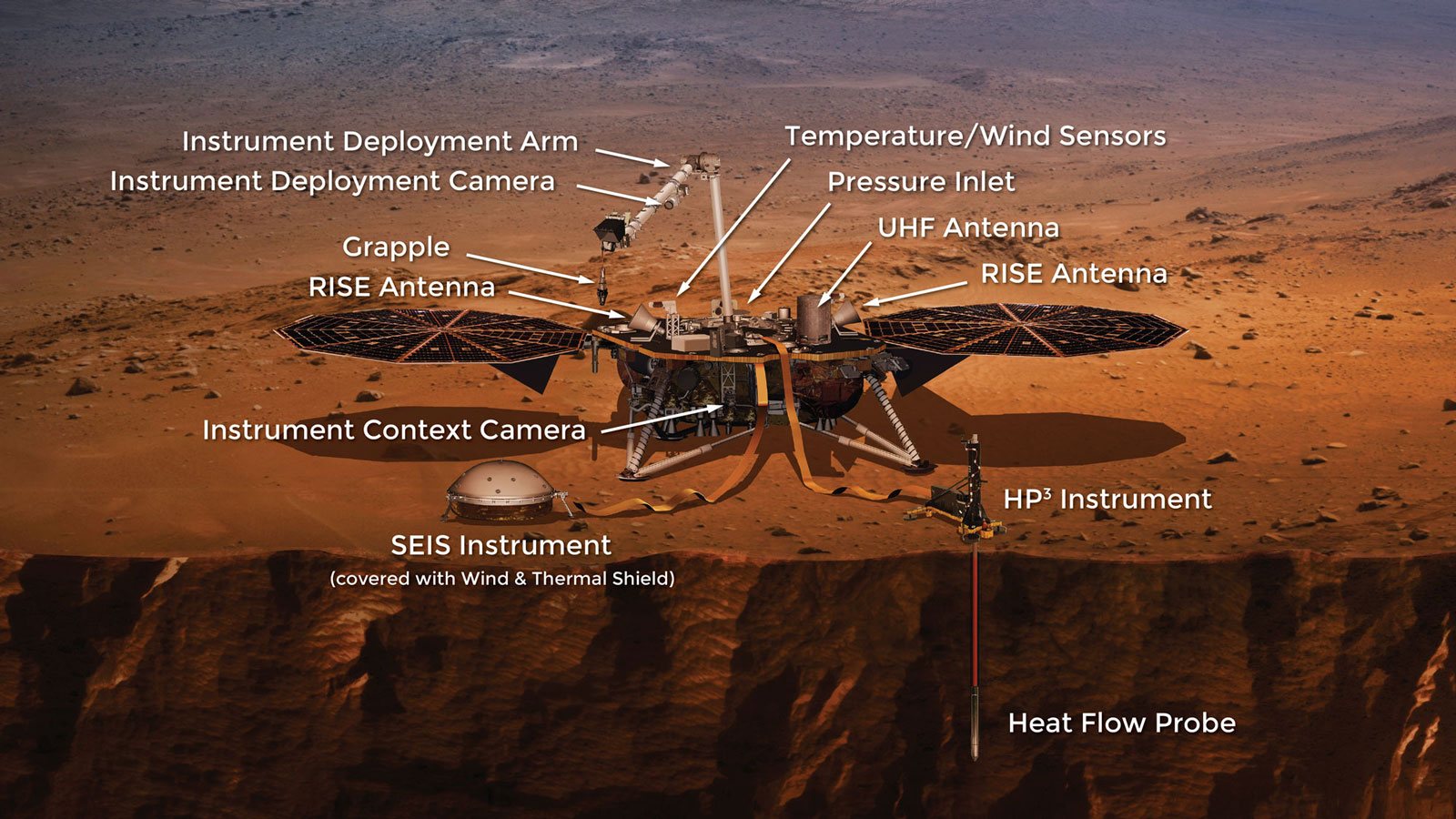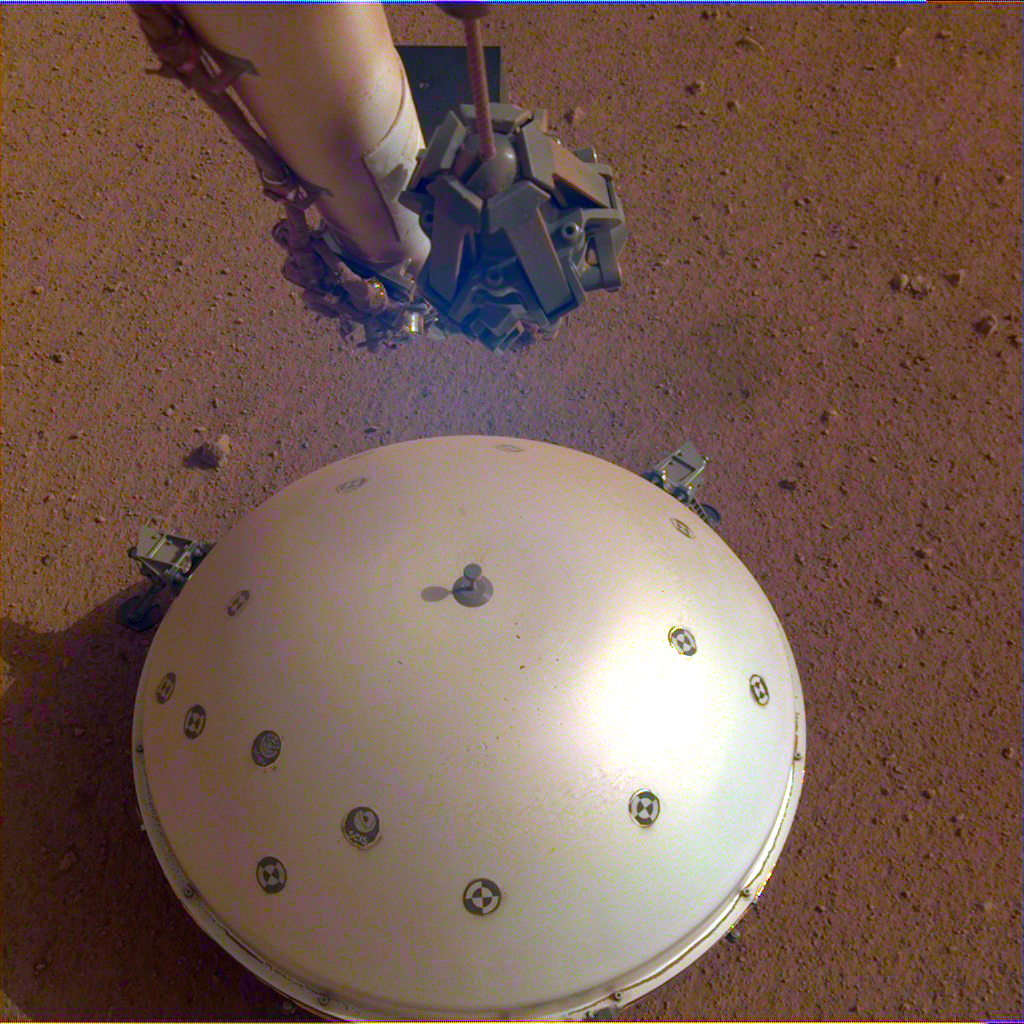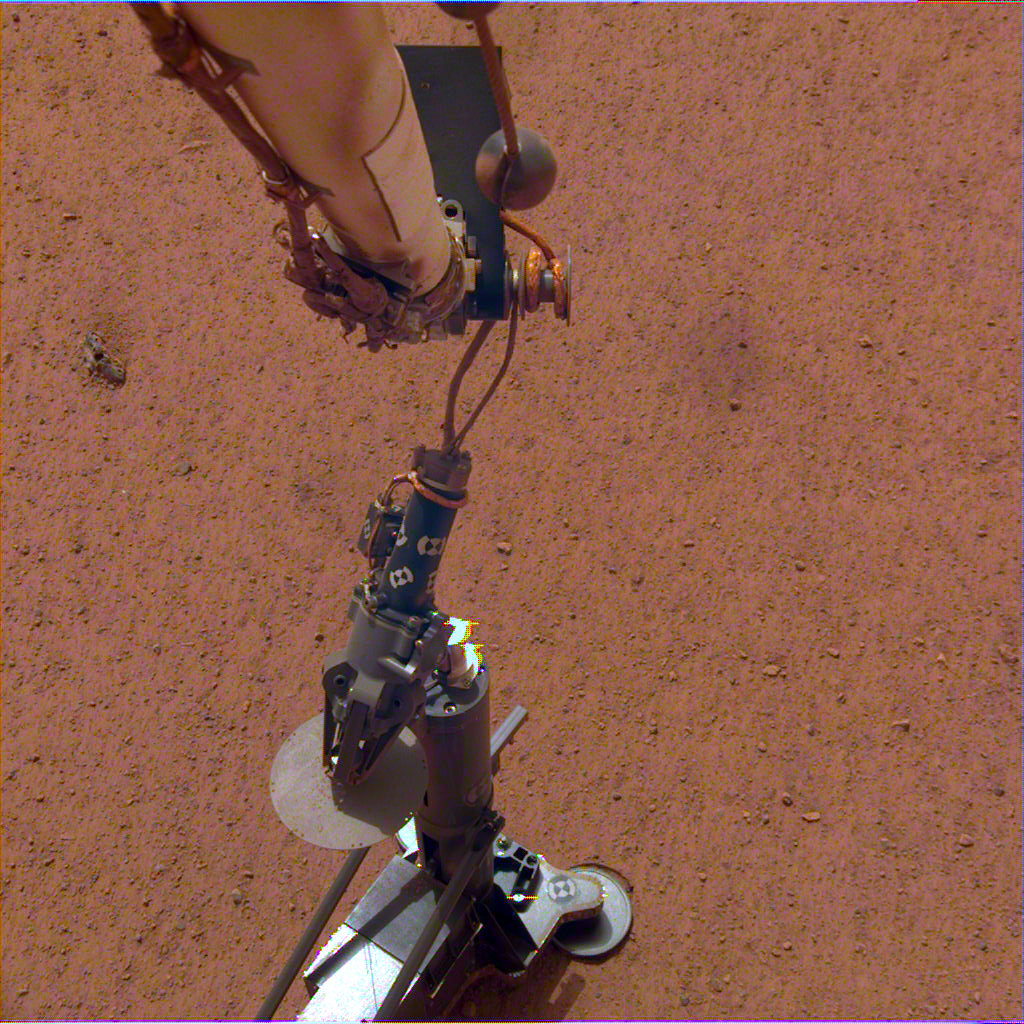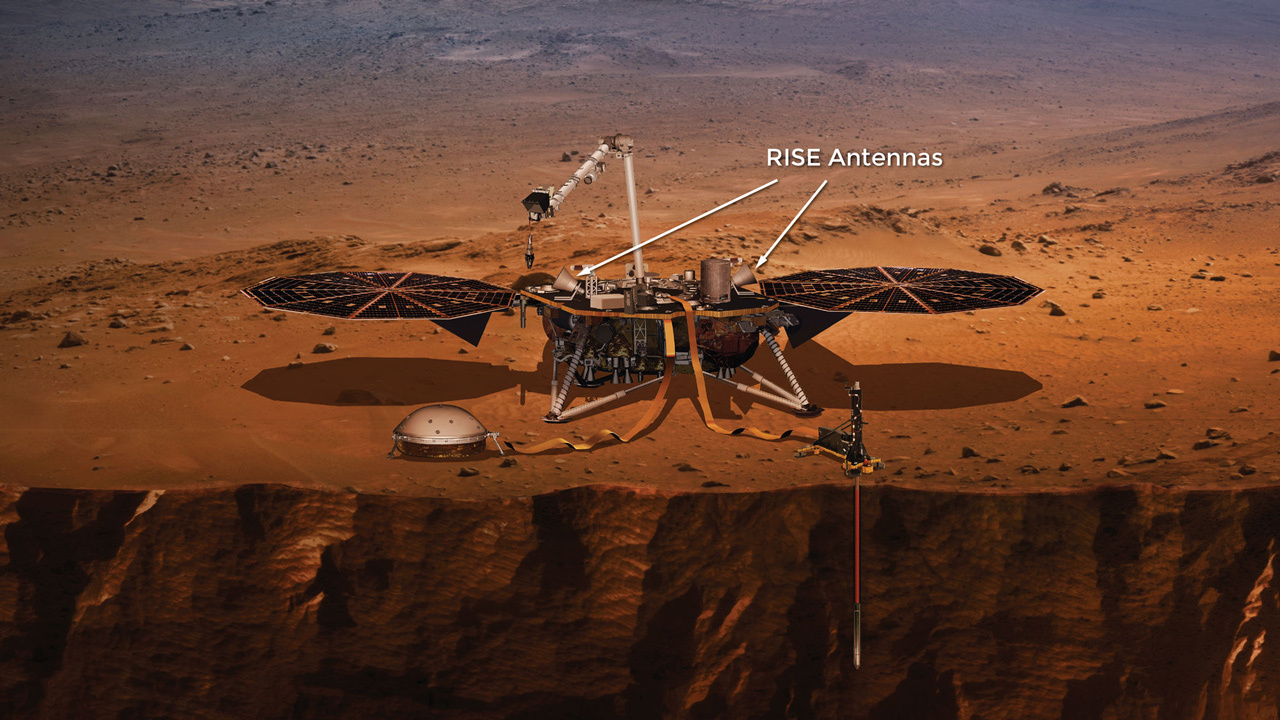InSight Lander
Science Instruments
The InSight Lander’s three primary instruments, SEIS, HP3, and RISE, were designed to take the first-ever in-depth look at the planet's “inner space.” The mission’s goal was to study the fingerprints of the process of planet formation, buried deep in the Martian interior. InSight’s science measurements potentially were used to help shed light on just how warm and geologically active Mars still is, and provide essential clues on the evolution of Mars and of all the terrestrial planets.

Seismic Experiment for Interior Structure (SEIS)

InSight’s seismometer, SEIS, the Seismic Experiment for Interior Structure, was a round, dome-shaped instrument that sat on the Martian surface and took the "pulse" or seismic vibrations of Mars. Its measurements provided a glimpse into the planet’s internal activity. The seismometer waited patiently to sense the pulse, or seismic waves, from marsquakes, and thumps of meteorite impacts. A suite of wind, pressure, temperature, and magnetic field sensors helped fine-tune the seismometer's measurements. This helped it sense surface vibrations generated by weather systems such as dust storms, or by turbulence in the atmosphere due to phenomena such as dust devils, which can also generate seismic waves. SEIS measurements told scientists about the nature of the material that first formed the rocky planets of the solar system.
Tech Specs
Main Job | To measure the pulse of Mars by studying waves created by marsquakes, thumps of meteorite impacts, and even surface vibrations generated by activity in Mars' atmosphere and by weather phenomena such as dust storms. |
Location | Placed on the surface of Mars |
Power | Up to 8.5 watts |
Volume | About 0.8 gallons (3 liters) |
Data Return | 38 megabits per day |
Heat Flow and Physical Properties Package (HP3)

The Heat Flow and Physical Properties Package, HP3 for short, was designed to burrow down to almost 16 feet (5 meters) into Mars' surface. That's deeper than any previous arms, scoops, drills, or probes before it. Similar to studying the heat leaving a car engine, it sought to measure the heat coming from Mars' interior to reveal how much heat was flowing out of the body of the planet, and what the source of the heat was. This instrument was designed to help scientists determine whether Mars formed from the same stuff as Earth and the Moon, and to give them a sneak peek into how the planet evolved.
The HP3 was designed, built and managed by the German Aerospace Center (Deutsches Zentrum für Luft- und Raumfahrt, or DLR), with significant contributions from the Space Research Center (CBK) of the Polish Academy of Sciences and Astronika.
Tech Specs
Main Job | HP3 was designed to measure the heat flowing out of the interior of the planet, allowing us to infer Mars' temperature deep in the planet. |
Location | Mounted on the lander deck for the trip to Mars. After landing, the lander's arm picked up HP3 and placed it on the surface. The mole then began to hammer itself under the surface but encountered different soil properties than expected and was unable to reach the desired depth. |
Mass | Just over 6.5 pounds (about 3 kilograms), including the control electronics inside the lander. |
Power | A maximum of 2 watts while burrowing underneath the surface. |
Volume | About 5.3 gallons (20 liters) in total, including the control electronics inside the lander. |
Data Return | 350 megabits over the course of the mission |
Rotation and Interior Structure Experiment (RISE)

InSight’s Rotation and Interior Structure Experiment, RISE, precisely tracked the location of the lander to determine just how much Mars' north pole wobbles as it orbits the Sun. These observations provide detailed information on the size, composition, and characteristics of Mars' iron-rich core.
Tech Specs
Main Job | RISE tracked the wobble of Mars' north pole as the Sun pushes and pulls it in its orbit. This helps scientists determine the size and composition of Mars' core. |
Location | Mounted on the lander deck for the trip to Mars. After landing, the lander's arm picked up HP3 and placed it on the surface. The mole then began to hammer itself under the surface but encountered different soil properties than expected and was unable to reach the desired depth. |
Mass | About 16 pounds (7.3 kilograms). |
Antennas | 3 pounds (1.4 kilograms). |
Transponder and Transmitter | 9.6 pounds (4.4 kilograms). |
Power | 78 Watts (operated up to one hour per day). |
Volume | 0.7 cubic feet (19.8 liters) total. |
Electronics | 0.13 cubic feet (3.8 liters). |
Medium Gain Antennas | 0.57 cubic feet (16 liters). |




